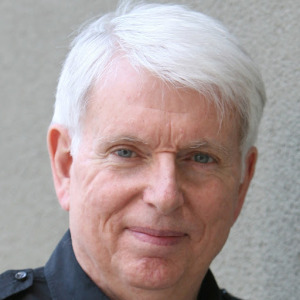
Ask Management What Their Goals Are – Interview with Jeff Sutherland co-creator of Scrum
 Want to know what executives and senior leaders really want from Scrum? Want to know how to avoid disaster with Scrum? In our final practitioner interview of 2014, I have the pleasure to share my conversation with Jeff Sutherland, inventor and co-creator of Scrum and the CEO of Scrum Inc, on these topics and more.
Want to know what executives and senior leaders really want from Scrum? Want to know how to avoid disaster with Scrum? In our final practitioner interview of 2014, I have the pleasure to share my conversation with Jeff Sutherland, inventor and co-creator of Scrum and the CEO of Scrum Inc, on these topics and more.
Earlier this year, I published my book review of Jeff’s latest book, Scrum: The Art of Doing Twice the Work in Half the Time, and was throughly impressed. Thinking that all of you would enjoy more insights on Jeff’s experience and what he hears from senior leaders, I contacted him to see if he would be interested in participating in our series of practitioner interviews and he said “Yes”. Also, I am not the only one who emphasizes the importance of delivering working software at the end of each and every Sprint!
- Please tell us a little about what you do each day and why is it important? As the inventor and co-creator of Scrum, the most widely used Agile framework in the world, I have a unique opportunity to coach people into a better way of working that helps individuals be more successful and productive and make the world a better place. So every day I work on that by teaching, coaching, writing or organizing for my next engagement. I also meditate, play with my grandchildren, take my dog for long walks and watch Person of Interest.
- When you first began with Scrum, why were people interested in this new way of working? The developers working with me had software deliveries that were always late with too many bugs. Management was upset and the customers were unhappy. As a member of the President’s Advisory Council for ACCION, a micro-lending non-profit, I saw how poor people who couldn’t feed their families could bootstrap themselves out of poverty with a small loan, a business plan, and perhaps most important – a team. Within a few weeks they could feed the kids, within a month or two they could buy shoes and clothes so they could send their children to school, and in six months they were building a new house. I asked the developers if they wanted a better life, they had shoes, but no working software. I told them I had some ideas from working with poor people and my Team helped me create Scrum.
- So what was the result? Six months later they were delivering so much software that the customers and the management asked them to slow down.
- Now that Scrum has enjoyed such great popularity and success, what continues to draw people to Scrum? What keeps them interested in Scrum? Surveys show that most people hate work. They can’t be creative, can’t focus and don’t find meaning or purpose in the work they do. They are under pressure, overworked and have no life. They are ordered around and can’t work on what they want and have no liberty. As a result they are depressed and unhappy. Scrum gives people back life, liberty and the pursuit of happiness, the inalienable rights of every American. Scrum is based on how the best teams in the world work. Such teams have transcendent goals; they want to make the world a better place. The teams decide how to meet those goals, they decide how to do the work, they decide how much work to do; they have autonomy. They collaborate in cross-functional teams building knowledge, creativity and joy. This is why they like it. If they give it up they go back to no life, no liberty, and no happiness. Of course, there are a lot of dysfunctional Scrum teams out there and people don’t enjoy working in those environments. So at Scrum Inc we focus constantly on coaching, training, teaching, writing, to help people understand how to achieve the promise of life, liberty and pursuit of happiness.
- What are the three biggest stumbling blocks for executives and senior leaders in adopting Scrum for their organizations? The three biggest blocks are (a) command and control hierarchies that put pressure on people and take away their life. Studies show that people working in these environments lose an average of ten points of IQ and are much sicker than other people. They are unengaged in the workplace and their productivity is low. (b) Managers think they can micro manage, order people around and get the job down. But the average failure rate of traditional project management is 86% and yet managers, not knowing any better, hope that more meetings, more reports and more pressure will solve the problem. They treat people like slaves and take away their liberty. That leaves workers unengaged, uncommitted, working slowly with poor quality. (c) Surveys show that the majority of people are looking for a new job because they hate their work. This leads to high turnover and even lower productivity.
- So what are your observations about managers in these situations you describe? Managers aren’t that happy either. More global competition with faster Agile companies threatens to put these traditional managers out of business and out of a job.
- What would be some next steps for managers when they are in these situations? They need to become Servant Leaders. They need to provide visionary goals that inspire people to great achievement. They need to learn how to make their people happier so they are more productive. Their inability to do these three things creates their three major blocks identified earlier.
- What sort of language should Scrum practitioners be using when talking to executives and senior leaders about these concerns? Managers want numbers, not talk. A lot of teams don’t know their velocity of production and cannot show they have improved. They don’t measure their happiness and improve it; instead they complain all the time. Then they say management doesn’t support them so they can’t do Scrum. Teams need to ask management what their goals are. Then they need to deliver on these goals 400% faster with twelve times the quality like Toyota does. Then management will take notice. This will take time with the teams making small incremental improvements. Persistence is essential.
- Is there anything specific you might recommend for these executive and senior leaders to help them through the transition? It is helpful to have management training by Agile peers to show how to set up, participate, and gain the full benefits of Scrum. That is why we have our CEO and COO at Scrum Inc. do as much management training as possible. It is extremely effective.
- We have all seen how an organization will start out great with Scrum, then a leadership change occurs at the top (or the middle) and shortly thereafter Scrum is shown the exit. What can Scrum practitioners be doing to help prevent this from occurring in their organization? There needs to be immediate training for the new executives by their Agile peers. Buy in is essential or a good Scrum will be destroyed. This is a self-correcting problem as bad management will destroy market leadership, reduce revenue, and can even put the company into bankruptcy or turn them into the walking dead. Other Agile companies will take over their market. Their best people will leave and go to Agile competitors.
- What practices, activities or attitudes do you see Scrum practitioners doing that puts their credibility at risk with executives and senior leaders? They tell them about the great benefits of Scrum and then coach Teams that are not delivering working software at the end of every Sprint, not fixing bugs immediately when they find them, not constantly improving productivity and not delivering impact to the market. Recently, during a tour of twelve of the leading companies in Silicon Valley, I found the majority of teams unable to deliver working software. I asked the management why they were hiring dozens of Agile coaches when they couldn’t deliver working software. Two management teams said they were firing their Agile coaches and starting to train internal coaches who could deliver working software.
- What do you see are the greatest challenges for Scrum in the next decade? The greatest challenge of success is the widespread adoption of Scrum by those who don’t understand how it works, don’t implement it properly and will probably give it up for what they think is the next fad (which won’t help them either).
- What are your hopes for the future of Scrum? My goal for Scrum was to give people the opportunity to grow as individuals and have great fun taking back their power and regaining control of their life by delivering at least twice as much product with quality that allowed them to sell it for twice the price. When the company has 400% more money, the management is happy, the employees are happy, the investors are happy and the customers are happy. My hope is that every person on the planet can have a better life and achieve remarkable things with Scrum. I think it is easily doable if Scrum gets into the educational system. The leading implementation of Scrum today is in some of the high schools in the Netherlands. Check out eduscrum.com – their results are amazing.





